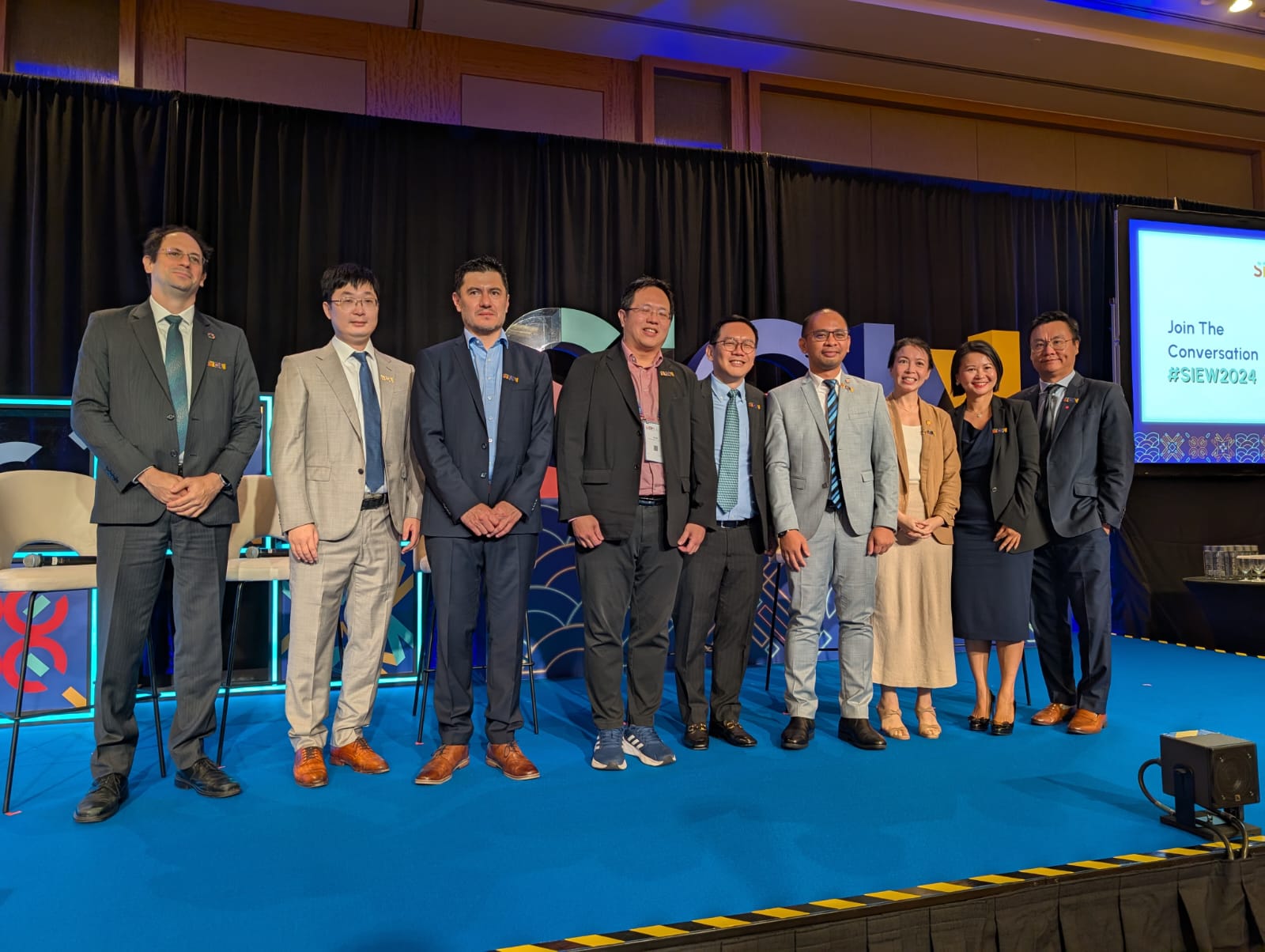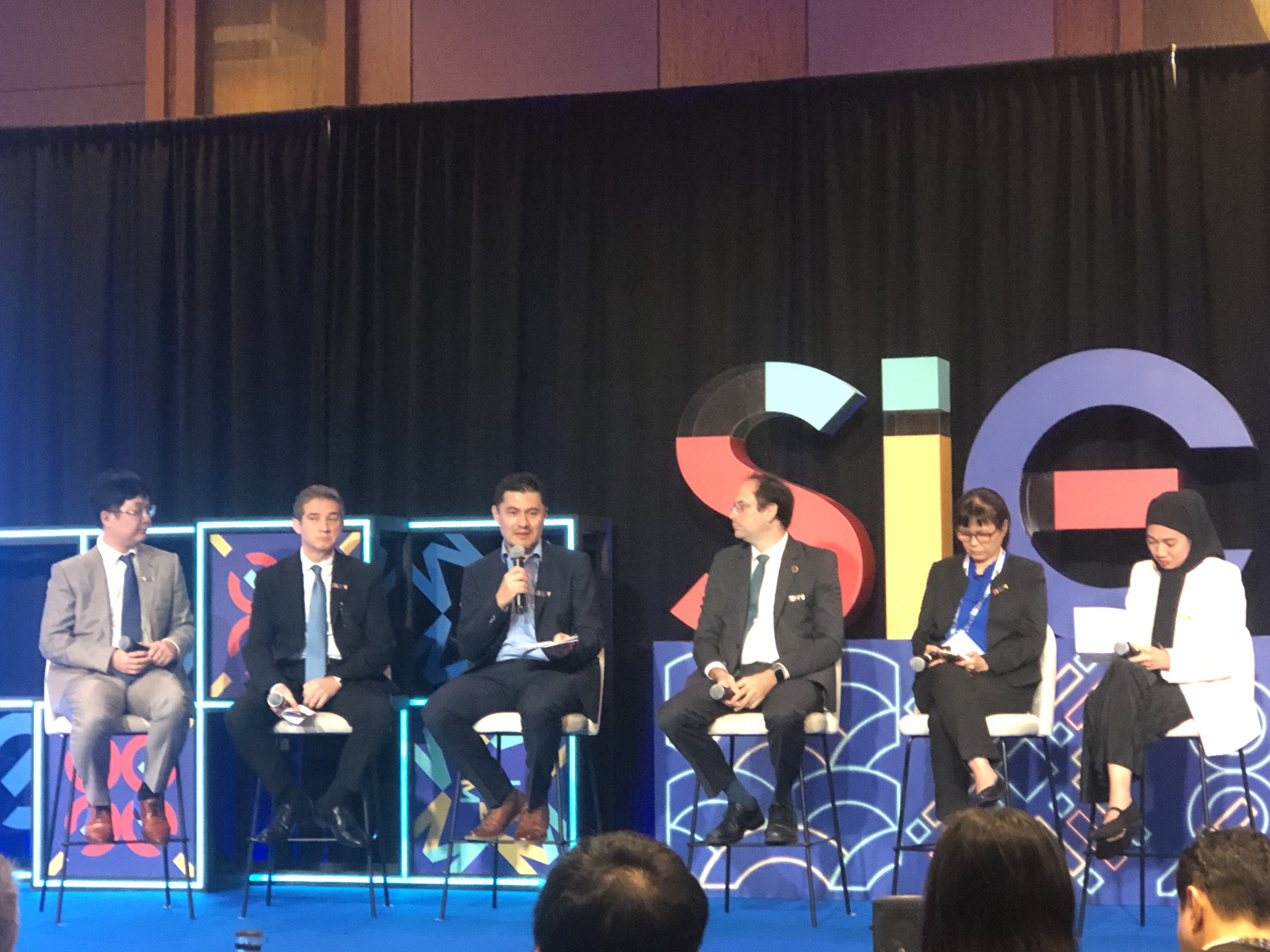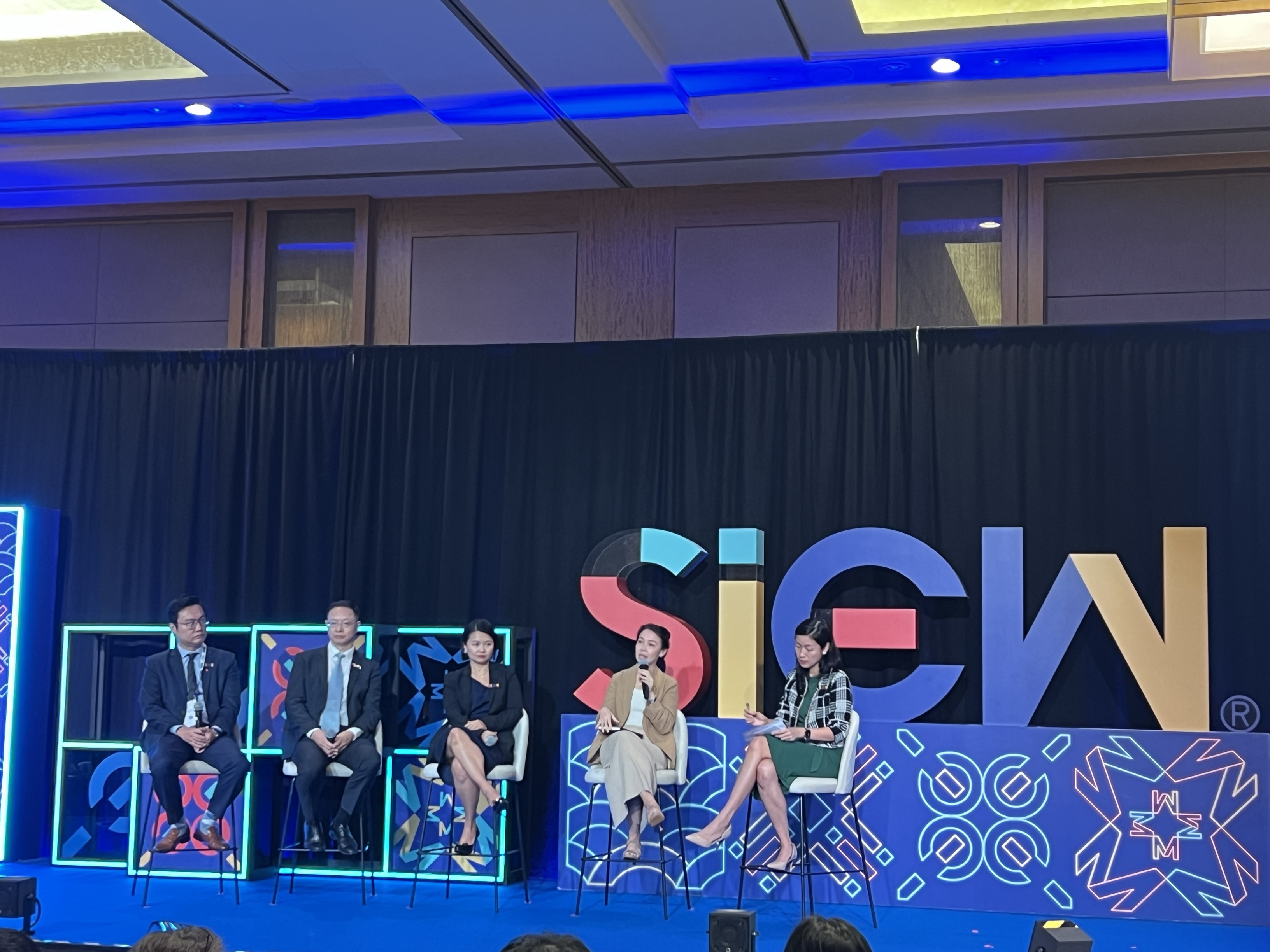Highlight
ESI@NUS AND ACE LEADS DISCUSSION ON DECARBONISING SOUTHEAST ASIA AT SIEW 2024

In a global context focused on achieving net-zero target, ASEAN plays a crucial role in transitioning towards a decarbonised energy sector. The region’s reliance on fossil fuels, particularly coal and oil, has created significant regional and global environmental issues. Rapid economic growth in ASEAN, along with high energy demand, necessitates strategic planning of the renewable energy mix, grid modernisation, investment and collaboration of financing from public and private sectors, and socio-economic benefits from domestic and regional perspectives. To address this challenge, the Energy Studies Institute at the National University of Singapore (ESI@NUS) and the ASEAN Centre for Energy (ACE), recently co-hosted a roundtable, "Decarbonising Asia: Energy Transformation”, during Singapore International Energy Week (SIEW) 2024.
In the scene-setting presentation, Beni Suryadi, Acting Executive Director of ACE, said “In the landscape of global energy, Southeast Asia stands out for its rapidly increasing energy demand, a phenomenon unmatched by any other region in the world”. He highlighted the urgency for a strategic, long-term approach to energy transition that not only addresses immediate needs but also paves the way for sustainable development and socioeconomic benefits.
Following this, the second scene-setting presentation emphasises that the significant aspect of this transition is the enhancement of electricity trade within the region. Dr. Zhong Sheng, Senior Research Fellow of ESI@NUS, shared his results on ASEAN Power Grid (APG) research. He pointed out that “Increasing inter-country electricity trade can yield substantial socio-economic benefits locally, including export revenues that positively impact national economies.”

The first panel discussion, titled “Charting a Diversified Renewable Energy Path”, was moderated by Nadhilah Shani, Senior Research Analyst of ACE. The panel featured five experts, that are Dr Zhong Sheng, Senior Research Fellow of ESI@NUS; Francisco Gafaro, Team Lead Power Sector Transformation, Innovation and Technology Centre of IRENA; Matthew Wittenstein, Section Chief, Energy Connectivity, Energy Division of United Nations Economic and Social Commission for Asia and the Pacific (UNESCAP); Jen Tan, Head of Renewables for Singapore and Indonesia of Sembcorp Industries; and Tolga Bayan, Commercial Director for Asia Pacific of Karpowership.
The panel discussion started with how ASEAN has aligned the understanding of energy transition and how it can further leverage tangible action. Francisco Gafaro, Team Lead Power Sector Transformation, Innovation and Technology Centre of IRENA stated, “Tangible projects in the ASEAN region are gaining momentum, with discussions shifting towards aligned objectives and clear understanding. Therefore, planning transitions at the regional level is crucial.” Identifying the best resources, creating effective regulations, and developing cohesive policies are the essential steps in this journey. Importantly, the local grid should not be neglected because it must be flexible and stable to support the overall system.
The diversity in the ASEAN region presents unique challenges and opportunities. Given the varied energy needs and resource landscapes across countries, a single innovative solution is unlikely to suffice. “While energy connectivity and transition progress at different places across the region, there is a growing confidence in the shift towards a decarbonised future. Transmission development is deemed a ‘no regret’ option and presents significant economic opportunities,” as stated by Matthew Wittenstein, Section Chief, Energy Connectivity, Energy Division of the United Nations Economic and Social Commission for Asia and the Pacific (UNESCAP). Mutual benefits arise from regional cooperation because no country can be entirely independent of this energy transition. He underscored that technology and resource sharing are crucial, making collaboration key.
Jen Tan, Head of Renewables for Singapore and Indonesia of Sembcorp Industries, said “Broader policy goals, such as reducing carbon emissions and achieving socioeconomic improvements, are driving these efforts. Communication to local populations regarding potential benefits, such as job creation, is crucial for gaining support.” Addressing domestic benefits at the regional level ensures a comprehensive approach to energy transitions. ASEAN interconnectivity is not just a dream but a necessity, and its benefits need to be realised.
Innovation in business models is necessary for all ASEAN members, and the region can gain greater benefits from grid cooperation with countries beyond Southeast Asia such as China and Australia. The APG is a pivotal project that can help accelerate the energy transition. Despite the slow progress since its inception, there is an urgent need for innovative policies and arrangements that engage various stakeholders. Dr. Zhong Sheng, Senior Research Fellow of ESI@NUS, stated, “Cross-border and domestic investments in this initiative must be clearly articulated to demonstrate the benefits for all involved. A fair and just institution should be established to ensure that everyone, including exporters, shares the benefits.”
An innovative solution, such as a ship, has the potential to transmit power. “Ships can be used as temporary solutions to close gaps in grid connectivity, offering quick construction and deployment”, suggested by Tolga Bayan, Commercial Director for Asia Pacific of Karpowership. Achieving 100% renewable energy (RE) in the short term is challenging. However, with tremendous investment and effort, this may be achievable in the long term. This requires significant investment in grid transmission, R&D, and proper investment in non-commercial technologies.

Moving on to the second panel discussion, titled “Financing the Future: Innovative Solutions for Decarbonisation Investments” was moderated by Lin Suling, Senior Columnist of Strait Times. The panel featured four experts, that are Jacqueline Lam, Regional Director, ASIA of SEforALL; Jie Tang, Practice Manager for Energy and Extractive Global Practice of the World Bank Group; Kelvin Wong, Managing Director, Head of Energy, Renewables & Infrastructure of DBS; and Jennifer Tay, Asia Pacific Infrastructure Leader of PwC.
The discussion began by identifying gaps in investment targets for energy transition. Jacqueline Lam, Regional Director, ASIA of SEforALL stated, “Bloomberg New Energy Finance reports that Asia needs $2.4 trillion annually until 2030 to meet net zero targets, yet only $840 billion is spent in 2023.” Addressing the 200% financing gap requires commitment and collaboration between public and private partnerships. Philanthropic investors, typically in the education, health, and social sectors, can also support energy transition as they are connected and will benefit these fields. The benefits of ASEAN interconnectivity should be realised through collective efforts and aligned goals. Involving small ASEAN states and building their capacity to participate is essential to leaving no one behind.
Creating business models that accommodate the unique aspects of each country within the ASEAN is vital. “Proper policies and regulations are needed to enable projects and cater to the market demand. Private-sector investments are essential because two-thirds of the required financing comes from them,” said Jie Tang, Practice Manager for Energy and Extractive Global Practice of the World Bank Group. Energy efficiency should be a priority for investment along with scaling up renewable energy power and reducing fossil fuel dependence. Moreover, without adequate grid infrastructure, 80% of curtailment can occur because of transmission issues.
The ASEAN region requires innovative solutions and investments such as smart metering and digital grids to facilitate energy transition. Kelvin Wong, Managing Director, Head of Energy, Renewables & Infrastructure of DBS stated, “Small companies is possible to contribute to the energy transition efforts. Adjusting contracts and structuring them with relevant small-middle enterprises’ counterparties is a crucial step”. Green bonds are an important financing option, and there is huge potential for private equity. Private equity investments that are successful in Europe should be attracted to Asia.
Digital transformation presents opportunities for energy transition, with the demand for renewable energy rising in the technological sector. “Grid curtailment risks is one crucial consideration from renewable energy investors. In some countries building their own transmission lines is not possible because of the market structure”, stated Jannifer Tay, Asia Pacific Infrastructure Leader of PwC. Green bonds and selecting appropriate assets such as network infrastructure can create long-term cash flows. Governments must ensure political cooperation and create conducive environments for regional grid planning.
The energy transition in Southeast Asia requires collaborative efforts, innovative business models, and robust policies. Experts emphasise the importance of regional cooperation, effective regulation, and local grid enhancements to ensure a flexible, stable, and integrated energy system. Key initiatives, such as the APG, are gaining momentum along with advancements in technology, such as energy storage. Even though the region faces significant investment gaps, with a combined effort from the public and private sectors, fundamentally aligned motivations can transform us into a sustainable world.